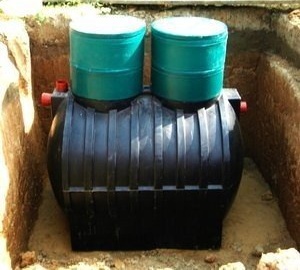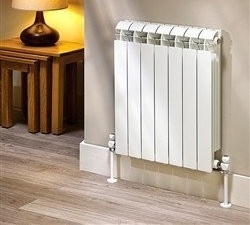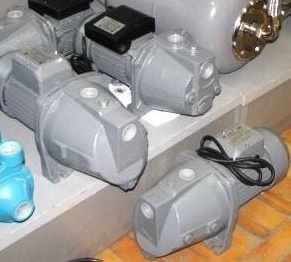Overview of the technical characteristics of Finnish septic tanks and treatment plants from Uponor
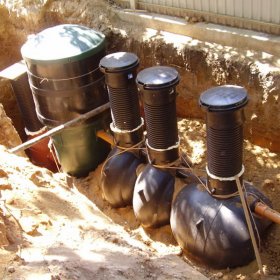
The products of the Finnish manufacturer Uponor are popular in the global market for local treatment facilities. Russian private developers developing autonomous sewage systems are wary of Finnish models because of high prices. In the Russian market, you can buy similar equipment cheaper, but not always better. By purchasing the Finnish septic tank Uponor, the owner of a country house or cottage can be sure of a high degree of sewage treatment. This means that people living in a private house will be provided with all kinds of amenities. In this case, the ecology of the personal plot will not be disturbed, since the land will not be contaminated with untreated liquid household waste.
Overview of the model line and its features
The assortment of the Finnish manufacturer includes three types of plants designed for local and effective wastewater treatment:
- Uponor sako: Under this brand, settling tanks are produced, which differ from each other in different volumes. The drains, falling into these tanks, settle, but are not completely cleaned of impurities and suspensions. Therefore, during the installation of these products, it is necessary to arrange filtration fields that provide soil post-treatment of domestic wastewater.
- Uponor bio: in these local wastewater treatment plants, along with the technology of settling liquid waste, methods of deep chemical and biological treatment are used.
- Uponor BioClean: high-quality and expensive products belonging to the premium class differ from the "brothers" in the model range in compact dimensions, convenient control of the cleaning process and the degree of clarification of waste.
A feature of all products manufactured by the Finnish company is their solid cast construction, devoid of any seams. Sealed containers are molded from high density polyethylene.
Adequate wall thickness provides unsurpassed strength of the treatment plant over a long service life. This is what distinguishes Finnish models of septic tanks from domestic products, the production of which uses the technology of combining several individual elements into a single container. The presence of seams affects the strength of the products.
Uponor Sako: two and three chamber sumps
Two or three-chamber septic tank Uponor Sako consists of several spherical elements that are resistant to compression by soil due to the peculiar shape of the containers and the sufficient thickness of their walls. High strength is one, but very significant, advantage. Domestic and sewage in the line of these models are treated in two stages:
- first, sewage settles in the septic tank;
- then there is a post-treatment of clarified effluents in the filtration fields.
Four Sako models are available, the productivity of which varies from 500 to 1300 liters per day, which affects the cost of the product. The greater the performance, the higher the price.
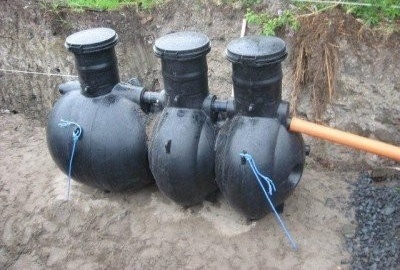
Uponor Sako sumps, manufactured by a Finnish manufacturer, are particularly robust, but require filtering fields to be used to treat wastewater
Disadvantages of septic tanks of this line:
- problems during installation and operation in areas with a high level of groundwater occurrence;
- the need to warm the local treatment plant in winter:
- fight against unpleasant odor arising in the fields of filtration;
- high cost of products, exceeding 1.5-2 times the price of domestic models of septic tanks.
All the disadvantages are due to the need for soil post-treatment of waste.
Uponor Bio: complete biochemical treatment
In this line, there are three stations for complete biochemical treatment of wastewater (Bio 5, Bio 10, Bio 15), which differ from each other in performance, product weight and cost. Liquid household waste passing through the septic tank Uponor Bio can be disposed of without additional soil treatment.
Finnish bioremediation plants operate according to the following principle:
- the effluent first flows by gravity into the sump (receiving chamber), where the bulk of the light and heavy organic inclusions settle;
- then the effluent is sent to a technological tank in which an aerator is installed, activating the course of microbiological processes;
- then a special reagent is dosed into the treated effluents, which contributes to the early precipitation of fine suspensions into a solid precipitate;
- dumping of the liquid cleared to a safe state in soil.
Advantages of such biochemical treatment plants:
- batch processing of wastewater, which allows to achieve equally good quality of treatment;
- strength and durability of installed containers;
- availability of all accompanying documentation;
- ease of installation and subsequent operation.
The disadvantages include the volatility of the plants, the need to purchase special reagents, and the overpriced cost of the models.
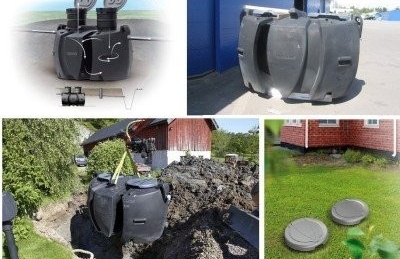
Uponor BioClean compact plant for biochemical treatment of domestic and sewage effluents allows clarification of liquid waste to a safe state and its disposal right on the ground
Also, I would like to note that the Uponor BioClean 5 local biochemical treatment plant is similar in its design and operation principle to Uponor Bio models, but much cheaper than them.
Finnish equipment manufactured for the installation of autonomous sewage systems is worthy of consumer attention. Of course, ordinary sedimentation tanks are not worth buying in three. Uponor Bio and BioClean 5 models will work out the investment, ensuring uninterrupted wastewater treatment and discharge into the ground without harming the ecology of the site.
